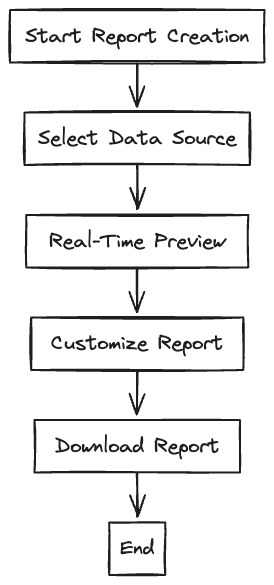This guide provides a comprehensive overview of the ProjectMark Reports Panel, a centralized management system designed for tracking and organizing company-wide reports. It covers key features, report creation, customization, and export functionalities, along with pro tips.
Overview of ProjectMark’s Reports Panel
The Mark Reports Panel offers a single, intuitive platform for managing all company reports. It provides a comprehensive view of organizational reporting, enabling users to gain valuable insights through advanced filtering and report source classification.
Key Features
- Centralized Report Management: A single panel for all company reports, providing a comprehensive view of organizational reporting.
- Report Source Classification: Identifies the origin of reports, including Opportunities, Contacts, Companies, and Active Users.
- Advanced Filtering Capabilities: Dynamic filtering options at the top of the page, allowing users to view all reports or filter by specific source type.
Visualization of Report Management
All Reports
Comprehensive view
Displays the entire report collection
Source-Specific
Targeted insights
Filters by specific report origin
Filter Category Description Functionality
Pro Tips
- Maximize reporting efficiency by utilizing advanced filtering.
- Understand the diversity of report sources.
- Leverage the panel's intuitive design.

Report Creation and Data Sourcing Guide
This section details the report generation process, data source selection, and preview capabilities.
Report Generation Process
- Key Features: One-click download and real-time preview functionality.
- Data Source Selection: Users can choose from five available data sources via a drop-down menu.
Report Creation Workflow
- Select the desired data source.
- Preview data in real-time.
- Customize report parameters.
- Download the final report with a single click.
Key Takeaways
- Emphasize the user-friendly interface.
- Highlight preview functionality.
- Understand the multiple data source options.
Pro Tips
- Always verify data sources before final export.
- Utilize real-time preview to ensure accuracy.
- Leverage one-click download for efficiency.

Report generation and customization guide
This section covers report configuration, naming, scheduling, team member notifications, and record export strategies.
Report Configuration Process
- Naming and Scheduling Reports: Specify a unique report name and configure recurrence settings (daily, weekly, monthly, quarterly, annually). Schedule generation for specific dates.
- Team Member Notification: Select specific team members to receive the report based on role, department, or access level.
Record Export Strategies
- Export Options: Export all records or filter records using saved or custom filters.
Custom Filter Creation
- Filter Navigation Process: Click The filter icon on the top right section of your screen to refine data selection criteria and customize export parameters.
Filter Type
Saved Filters
Pre-configured data sets
Description
Quick, repeatable exports
Custom Filters
Dynamically created selections
Specific, targeted data retrieval
Use Case
Full Dataset
Complete record export
Comprehensive reporting needs
Recommended Best Practices
- Be precise in filtering and validate data selection.
- Regularly review and update filter configurations.

Key Considerations
- Maintain data privacy.
- Ensure accurate recipient selection.
- Validate export parameters.
- Document reporting processes.
Report Generation and Export Settings
This section details report configuration options, field selection, export customization, and advanced Excel export features.
Report Configuration Options
- Field Selection: Export all fields or manually select specific fields.
- Export Customization: Choose from multiple export formats, with Microsoft Excel (.xlsx) recommended.
Advanced Excel Export Features
- Grouping Capabilities: Create hierarchical groups within the report.
- Reporting Subtotal Options: Display subtotals for individual groups and overall total aggregations.
Key Considerations
- Flexibility: Customize the report to precise requirements.
- Granularity: Control over data presentation.
- Efficiency: Streamlined export process.
Pro Tips
- Always preview the report before final export.
- Verify selected fields match reporting needs.
- Utilize grouping for enhanced data visualization.
Report Configuration and Design Notes
This section covers the report configuration panel, preview and customization options, visibility settings, and report design enhancements.
Report Configuration Panel
- Preview and Customization: Manage columns (reorder, remove) and preview changes in real-time.
- Visibility Settings: Choose between private and public report visibility.
Report Design Enhancements
- Improved Readability: Redesigned visual layout for more intuitive information display.
- Metadata and Tracking: Clear indication of report creator and transparent origin tracking.
- Grouping and Analysis: Detailed group-level subtotals and comprehensive data segmentation.

Key Visualization Concept
Best Practices
- Always review column configurations.
- Carefully set visibility parameters.
- Utilize detailed grouping for comprehensive insights.
Potential User Benefits
- Increased report customization.
- Enhanced data presentation.
- Improved collaborative capabilities.


